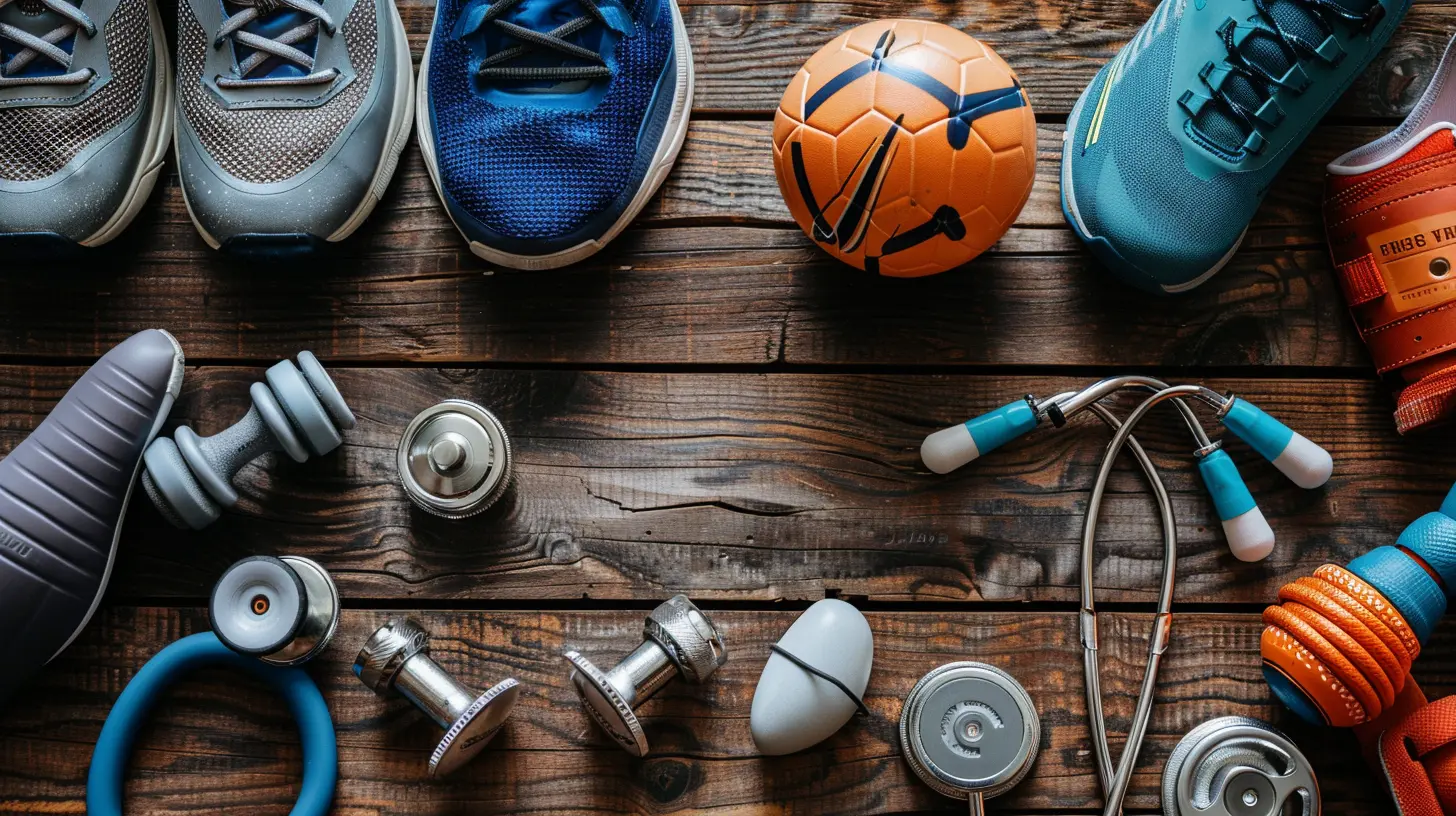How to Build an Effective Injury Prevention Program for Your Team
4 August 2025
Alright, coach, athlete, fitness junkie, or well-meaning team manager — you’ve got a squad to protect. You want ’em fast, strong, and durable... not limping off the field like a spaghetti noodle in a windstorm. We’re talking about building an injury prevention program that doesn’t just scream “science!” but actually works in the real world — lockers, turf, courts, and all.
Let’s face it: Injuries stink. They blow seasons, crush dreams, spike medical bills, and send your fantasy football team into a freefall. So instead of duct-taping your team together after the fact, let’s pump the brakes and talk about keeping them healthy from the get-go.
This article is your playbook — filled with tips, tricks, a sprinkle of humor, and just enough science to make your high school gym teacher proud.

Why Even Bother with an Injury Prevention Program?
Before we dive into the how-to, let’s answer the big ol’ WHY.Imagine this:
You’ve built a team of absolute units — athletic, skilled, ready to smash the competition. But then three of your starters go down in a single week with “preventable” injuries. Say goodbye to that playoff run.
Injury prevention isn’t just about avoiding pain — it’s about unlocking consistency, building confidence, and avoiding downtime longer than grandma’s holiday stories.

Step 1: Start with the Data (Yeah, the Boring but Crucial Part)
Let’s crunch some numbers — not bones.Start by collecting data on your team:
- Common injury types (ankle sprains, hamstring strains, shoulder issues)
- Frequency of practice and games
- Age, gender, and fitness levels
- Past injury history (a.k.a. the “uh-oh” file)
You don’t need to be a sports nerd to recognize that having this info is solid gold. The more you understand your team’s patterns, the better you can tailor a prevention plan.
📈 Fun fact: Teams that track injuries and training loads reduce soft-tissue injuries by over 30%. That’s not just helpful — that’s magic.

Step 2: Warm-Ups That Don’t Suck
No more “two laps and touch your toes” warm-ups from 1995, please.A solid warm-up should:
1. Increase core body temp (we’re not toasters — we need some heat!)
2. Activate the muscles being used
3. Prepare the nervous system for action
Mix it up with fun, functional routines:
- Light jogging or dynamic movement circuits
- Drills like high knees, butt kicks, leg swings
- Sport-specific movement patterns
Bonus points if your team actually enjoys the warm-up and doesn’t treat it like a dental appointment. Consider turning warm-ups into mini-challenges: timed shuttle runs, coordination games, or balance exercises.
👉 Here's the rule: A good warm-up should make your players sweat a little, smile a lot, and move like they mean it.

Step 3: Strength and Conditioning (Spoiler: It’s Not Just for Show-Offs)
You want injury prevention? Then it’s time to lift smart, not just heavy.Poor strength equals poor control, and that equals awkward movements. And awkward movements = injuries. Simple math.
Focus on:
- Core strength (abs, back, hips — the command center of movement)
- Functional movements (think: squats, lunges, planks, push-ups)
- Eccentric training (this is the “slow down” phase of movement — most injuries sneak in here)
- Balance and proprioception (translation: don’t fall over like a drunk giraffe)
Mix it up so it doesn’t feel like bad gym class flashbacks. Circuit training, resistance bands, TRX, bodyweight stuff — whatever keeps it spicy.
Also… don't skip the posterior chain, people. Hamstrings, glutes, and back muscles are often the weak links in the chain. Train the rear, save the career.
Step 4: Flexibility Isn’t Just Yoga for Soccer Moms
Raise your hand if you’ve watched a teammate snap like dried spaghetti because they refused to stretch. Yikes.Mobility matters. It’s the oil in the engine, the salsa at the taco bar.
Incorporate these into daily practice:
- Dynamic stretches before practice
- Static stretches post-practice
- Foam rolling or trigger point massage
- Mobility drills like hip openers, thoracic spine twists, and ankle mobility work
Keep your athletes loose, limber, and moving smoothly. Tight muscles are injury magnets.
And hey, if you can get your whole team to do synchronized stretching, you’ve basically got a Cirque du Soleil audition.
Step 5: Recovery Like a Pro (Seriously, Stop Skipping It)
This is where most teams shrug and say, “We’ll rest in the offseason.”Nope. Recovery is part of training, not the opposite of it.
Consider these staples:
- Sleep (the MVP of physical recovery)
- Hydration (water, not soda...sorry)
- Nutrition (protein, carbs, electrolytes — aka the holy trinity)
- Active recovery sessions (walking, swimming, biking)
- Massage or physiotherapy as needed
Recovery isn’t lazy. It’s strategic.
You can't train hard and train often without training smart. Think of it like charging your phone — run it hot all the time without plugging it in, and you’ll end up with a paperweight.
Step 6: Teach Movement Mechanics (Fix That Wonky Form)
You know it's bad when your star forward cuts like they're dodging bees. Sloppy movement invites chaos, and chaos invites injuries.Teach your athletes proper mechanics:
- Jumping and landing technique (soft knees, quiet feet)
- Cutting and pivoting (control is king)
- Proper sprint form (knee drive, posture, arm swing)
- Lifting technique (no one wants a slipped disc from a bad deadlift)
Sometimes, just filming them during practice or drills can work wonders. Letting them see their mistakes? Golden!
And no, you don’t need to be Olympic-level to move like an athlete — you just need consistent coaching.
Step 7: Communicate. Like, Actually Talk.
Your players aren’t robots. They’re walking, talking injury-risk calculators with opinions and feelings. Wild, right?Make it a habit to:
- Ask about soreness, tightness, or previous injuries
- Check in after games or practice
- Encourage honesty about pain (no more “walk it off, champ” garbage)
- Educate them on signs of overtraining or burnout
A team that communicates openly is a team that stays healthy longer. Silence is not golden when it comes to injuries — it’s just dumb.
Step 8: Schedule Smarter, Not Harder
Overtraining is a one-way ticket to Snap City.Too many games, too few rest days, and jam-packed practices equal bad news bears.
Instead:
- Use periodization (cycle through high/low intensity training weeks)
- Schedule time OFF
- Prioritize in-season tapering (rest before big competitions)
- Avoid back-to-back high-intensity sessions
You wouldn’t floor the gas pedal for 12 hours and expect your car to survive, right? Then don’t do it to your athletes.
Step 9: Bring in the Pros
Sometimes you need reinforcements. If your budget allows (or you’ve got ultra-helpful parents), bring in:- Athletic trainers
- Physical therapists
- Strength & conditioning specialists
- Nutritionists
These pros can spot risks you’ve overlooked and give personalized advice that adds layers to your prevention efforts. Plus, having someone in a polo shirt and clipboard just feels official.
Step 10: Make It a Culture Thing
Your injury prevention program shouldn’t be limited to “Tuesdays if it’s rainy.” You’ve got to weave it into the DNA of your team.How?
- Get your captains on board
- Celebrate flexibility, recovery, and smart training the same way you celebrate hustle
- Make injury prevention visible in every practice plan
- Reward consistency, not just big plays
When your team buys into the culture of health, the whole vibe shifts. You’re no longer reacting to injuries — you’re proactively snuffing them out before they ruin your season.
The Bottom Line: Prevention > Rehab, Every Time
Building a solid injury prevention program isn’t rocket science, but it’s not “set it and forget it” either. It requires planning, consistency, coaching, and — above all — buy-in from your team.If you put in the work upfront, you’ll see fewer taped ankles, fewer panicked sideline moments, and way more wins. And hey, keeping your athletes on the field and out of the ER? That’s a victory dance worth doing.
Let’s not just train strong — let’s train smart. Now go forth and build a team worthy of Ironman-level durability (okay, maybe close).
all images in this post were generated using AI tools
Category:
Sports MedicineAuthor:

Preston Wilkins
Discussion
rate this article
1 comments
Thornefield Klein
Great insights! A solid injury prevention program can truly enhance team performance and longevity!
August 23, 2025 at 10:27 AM

Preston Wilkins
Thank you! I'm glad you found it helpful. Prioritizing injury prevention is key to sustaining both performance and athlete health.


